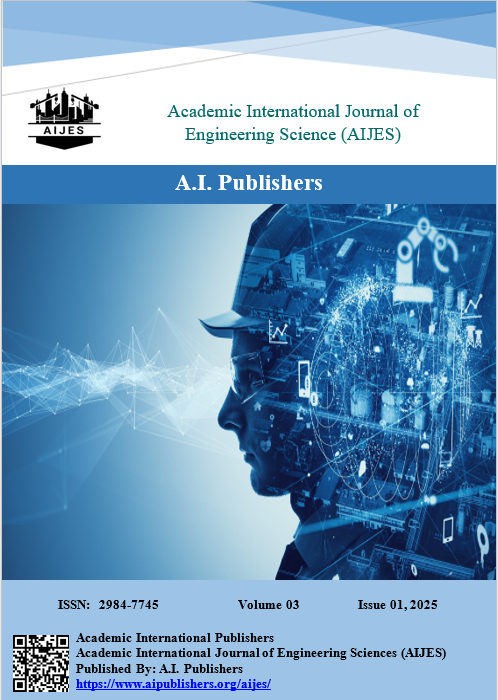Radial Basis Function Neural Networks for Rainfall Prediction and Urban Tree Management in Tropical Malaysia
DOI:
https://doi.org/10.59675/E112Keywords:
RBFNN; rainfall prediction; tropical Malaysia; urban tree management; GIS integration; predictive maintenance; urban forestry.Abstract
The current research paper summarizes a wide body of information on Radial Basis Function Neural Networks (RBFNNs) to predict rainfall and its application in urban trees management in tropical Malaysia. Several peer-reviewed articles were analyzed to determine the predictive accuracy, architecture, feature engineering, and integration issues of RBFNNs. It was found that the architectural properties of RBFNNs were appropriate for nonlinearity and nonstationarity in the precipitation processes. Relative performance assessments invariably ranked RBFNNs as one of the most efficient tools compared to other machine learning models, showing better Root Mean Square Error (RMSE) and generalization capabilities across various hydro-climatic regimes. It was identified that incorporating rainfall predictions using RBFNNs with Geographic Information Systems (GIS)-based applications like GeoTrees and the Kuala Lumpur Multi-Hazard Platform (KL-MHP) is a valid solution to facilitate predictive maintenance, reduce costs, and alleviate hazards in tropical urban settings. The results support the use of RBFNNs as a practical and, in many cases, better forecasting element in urban tree management systems, offering quantifiable advantages in maintenance planning, risk reduction, and resource distribution in municipal arboriculture programs.
References
Chai SS, Wong WK, Goh KL, Wang H, Wang Y. Radial basis function (RBF) neural network: effect of hidden neuron number, training data size, and input variables on rainfall intensity forecasting. Int J Adv Sci Eng Inf Technol. 2019;9(6):1921–6.
Cramer S, Kampouridis M, Freitas AA, Alexandridis AK. An extensive evaluation of seven machine learning methods for rainfall prediction in weather derivatives. Expert Syst Appl. 2017; 85:169–81.
Amrul F, Hudan PA, Shamsul Faisal MH, Che Munira CR, Aminaton M, Shahrum SA. Deep learning-based forecast and warning of floods in Klang River, Malaysia. Int Inf Eng Technol Assoc. 2020.
Lee J, Kim C, Lee J, Kim N, Kim H. Application of artificial neural networks to rainfall forecasting in the Geum River basin, Korea. Water. 2018;10(10):1448.
Broomhead DS. Multivariate functional interpolation and adaptive networks. Complex Syst. 1988; 2:321–55.
Avolio ML, Pataki DE, Gillespie TW, Jenerette GD, McCarthy HR, Stephanie P, Clarke LW. Tree diversity in Southern California's urban forest: the interacting roles of social and environmental variables. Front Ecol Evol. 2015; 3:3–15.
Iqbal H, Rasel HM, Monzur AI, Mekanik F. Long-term seasonal rainfall forecasting using linear and non-linear modelling approaches: a case study for Western Australia. Meteorol Atmos Phys. 2019; 132:131–41.
Mallikarjun M, Farheen, Saraswathi L, Prakash L. Artificial neural network-based weather prediction system. Int J Sci Technol Res. 2020; 9:5587–94.
Chai SS, et al. Backpropagation vs radial basis function neural model: rainfall intensity classification for flood prediction using meteorology data. J Comput Sci. 2016;12(4):191–200. Available from: https://thescipub.com/abstract/jcssp.2016.191.200
Haykin S. Neural Networks and Learning Machines. 3rd ed. Pearson Education; 2009.
Deo RC, Şahin M. An extreme learning machine model for forecasting rainfall. Procedia Comput Sci. 2015; 61:155–62. doi:10.1016/j.procs.2015.09.174.
Luk KC, Ball JE, Sharma A. A study of optimal model lag and spatial inputs to artificial neural network for rainfall forecasting. J Hydrol. 2000;227(1–4):56–65. doi:10.1016/S0022-1694(99)00165-1.
Solomatine DP, Ostfeld A. Data-driven modelling: some past experiences and new approaches. J Hydroinform. 2008;10(1):3–22. doi:10.2166/hydro.2008.015.
Wu CL, Chau KW. Rainfall–runoff modeling using artificial neural network coupled with singular spectrum analysis. J Hydrol. 2011;399(3–4):394–409. doi: 10.1016/j.jhydrol.2011.01.017.
Zhang Q, Wang BD. A hybrid model for rainfall forecasting using particle swarm optimization and neural network. Neural Comput Appl. 2018;29(8):321–32. doi:10.1007/s00521-016-2522-2.
Yusof KW, Abdullah J, Muhammad MZ. GIS-based multi-hazard spatial platform for urban disaster management in Kuala Lumpur. Geomatics Nat Hazards Risk. 2021;12(1):1670–92. doi:10.1080/19475705.2021.1943082.
Janssen M, van der Voort H, Wahyudi A. Factors influencing big data decision-making quality. J Bus Res. 2017; 70:338–45. doi:10.1016/j.jbusres.2016.08.007.
Othman JB, Valeo C. Evaluation of tree failure predictions using weather data and a mechanistic model. Urban For Urban Green. 2018; 29:289–99. doi:10.1016/j.ufug.2017.12.007.
Conway TM, Urbani L. Variations in municipal urban forestry policies: a case study of Toronto, Canada. Urban For Urban Green. 2007;6(3):181–92. doi:10.1016/j.ufug.2007.07.003.
Tangang FT, Juneng L, Salimun E, Vinayachandran PN, Seng YK, Reason CJC. Climate change and variability over Malaysia: gaps in science and research information. Sains Malays. 2012;41(11):1355–66.
Kisi O, Shiri J, Tombul M. Modeling rainfall–runoff process using soft computing techniques. Comput Geosci. 2013; 51:108–17. doi:10.1016/j.cageo.2012.07.001.
Escobedo FJ, Kroeger T, Wagner JE. Urban forests and pollution mitigation: analyzing ecosystem services and disservices. Environ Pollut. 2011;159(8–9):2078–87. doi:10.1016/j.envpol.2011.01.010.
Auzani H, Has-Yun KS, Nazri FAM. Development of trees management system using radial basis function neural network for rain forecast. Comput Water Energy Environ Eng. 2022; 11:1–10. doi:10.4236/cweee.2022.111001.
Downloads
Published
Issue
Section
License
Copyright (c) 2023 Academic International Journal of Engineering Sciences

This work is licensed under a Creative Commons Attribution 4.0 International License.





